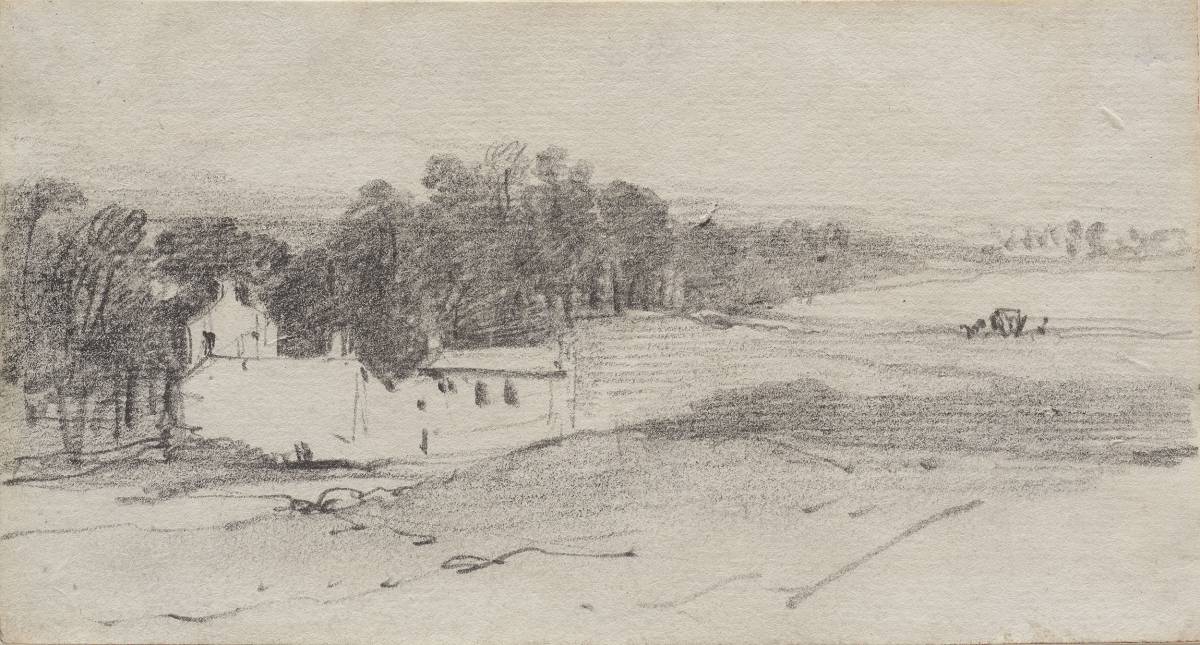This charming, rapidly executed pencil study is typical of Bonington’s late drawings. Although made on a diminutive scale, the drawing shows Bonington’s extraordinary ability to capture an expansive landscape with great expressive force. Born near Nottingham, Richard Parkes Bonington was the son of a portrait painter and drawing master, a non-conformist, who moved to Calais, apparently to escape social unrest, and set up a lace-making business. He received lessons from Louis Francia and was introduced to watercolour, a technique his mentor had learned while in England where he had lived for sixteen years, working among artists such as Thomas Girtin and John Sell Cotman. In 1818 Bonington moved to Paris, where in 1819 he enrolled in the studio of Baron Antoine-Jean Gros, receiving a traditional academic training. In 1825 Bonington travelled to London and met Delacroix, returning in August with Alexandre-Marie Colin.
This small, beautifully economic pencil study was probably made in France in 1824. The drawing shows a group of buildings in middle-distance in a stand of trees, Bonington creates the buildings by leaving a reserve in the paper, richly working the trees in graphite. Bonington’s fine, calligraphic hand sensitively captures the receding vista and suggesting the complex armature of each tree. There is evidence that Bonington used small sheets such as this in the creation of his finished watercolours and oils. Bonington was immensely active up until his death from consumption in 1828, following a rapid tour of Northern Italy. As highly regarded in France as well as Britain, Bonington was one of the finest and most expressive landscape draughtsmen of his generation. Patrick Noon has suggested that Jane Fox may have been one of a number of Bonington’s pupils who occasionally neglected to return drawings to him.
We are grateful to Patrick Noon for confirming the attribution of this drawing.


